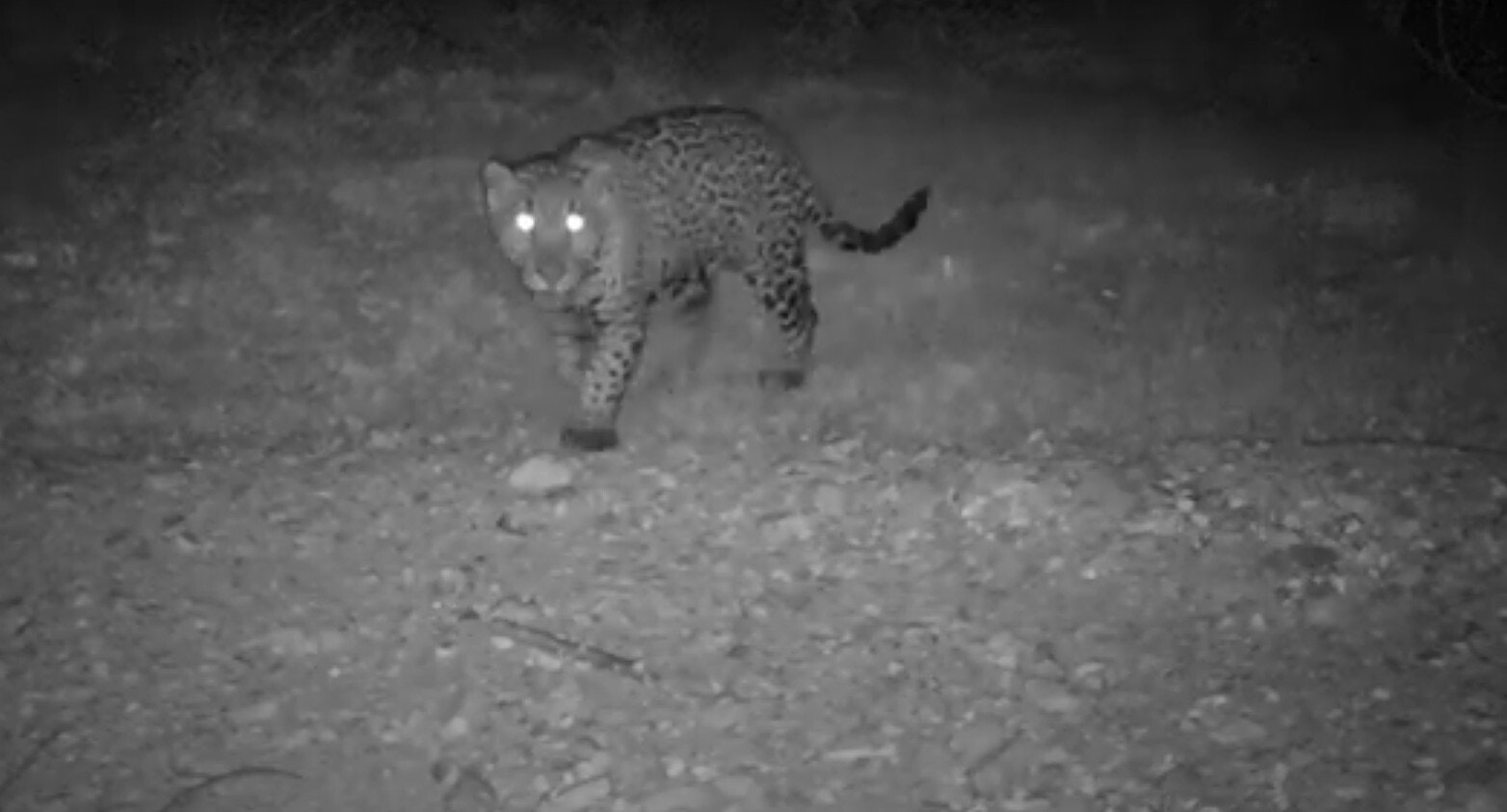A University of Wyoming professor has helped discover a species of jaguar not seen before in the United States near the Mexican border.
An image of the jaguar was captured recently by an Arizona graduate student and suggests habitat connectivity might remain between the southwestern U.S. and the northernmost jaguar subpopulation in Sonora, Mexico, which is more than 100 miles south of the border.
Ganesh Marin, a doctoral student in the School of Natural Resources and the Environment at the University of Arizona, discovered the jaguar while reviewing footage from wildlife cameras deployed as part of a research project studying mammal diversity and movements in the borderlands region.
John Koprowski, the dean of the University of Wyoming’s Haub School of Environment and Natural Resources, is Marin’s graduate adviser and professor emeritus at the University of Arizona. He is also leading the project that led to the discovery.
“This is an exciting discovery that highlights the importance of finding ways to sustain connectivity of our landscapes so that we can maintain wild and working lands in functional ecosystems today and for future generations,” Koprowski said. “The University of Wyoming and the state have a long history of working to facilitate animal movements and migration, and this new discovery, as part of a joint project by the University of Wyoming and the University of Arizona, adds to our leadership in wildlife conservation.”
In addition to jaguars, the area is rich in biodiversity and provides habitat for many other species, including ocelots, beavers and the Mexican gray wolf.
Jaguars are the largest species of big cats native to the Americas and are listed as endangered under the Endangered Species Act.
Historically, the animals occupied a continuous range extending from central Argentina to the southwestern U.S. states of Arizona, New Mexico and Texas.
However, since 1900, that range has decreased due primarily to human disturbance and habitat loss, and is now believed to span an area from northern Argentina to northwestern Mexico.
By 1990, jaguars were thought to have been eliminated from the United States.
Although individual cats have been observed in areas of southern Arizona and New Mexico in recent years, the jaguar observed in the project by Marin and Koprowski — dubbed “El Bonito” — is almost certainly from the Mexican Pacific subpopulation located in the Mexican state of Sonora and is the most northern jaguar reported for Mexico.
The finding indicates the need to maintain and conserve habitat connectivity and water resources on which the animals rely.





